Review: 2011 Lincoln MKX
The Ford Edge and Lincoln MKX have been sales successes despite lukewarm, at best, reviews. Apparently they provide what the typical crossover buyer wants. For 2011 they’ve received revised exteriors and thoroughly reworked interiors. Intrigued by the new MyFord/MyLincoln Touch user interface, I requested one for a week, and received the MKX. So, what’s the future like?
First, the rest of the vehicle. The name remains easy to confuse with the MKS and MKZ. The changes to the exterior styling align the MKX with the rest of the line, swapping out the classic Continental-inspired eggcrate grille for an oversized twin-portal piece and similarly splitting the previously one-piece tail light. Also, the front fenders now hump up, Mazda style, over the wheels. All of these changes render the exterior more trendy and less clean, though the MKX remains a moderately attractive vehicle.
The interior changes are more extensive. The retro-inspired instrument panel is gone. French stitching has been molded into the new, less distinctive IP to make it appear luxuriously upholstered, and the effect is convincing. The extensive wood trim is the real stuff. The metal-look trim is not, but its bronze finish is a refreshing, appropriately upscale variation from the norm. Overall, the interior looks good.
Getting into the Lincoln MKX is a bit of a chore, as the doors feel very heavy. Why? As in the first-generation MKX, but perhaps a little less so, the seat cushion can feel unexpectedly hard. The seatback provides some lateral support, which is more than the typical buyer will ever need. The seat heaters take a long time to get to work, and the steering wheel heater affects only the outside edge. Palms benefit while fingers—most in need of the heat—remain frigid. The rear seat reclines, but is a little low and there’s less legroom than in the average compact crossover.
The engine, bumped from 3.5 to 3.7 liters, is now good for 305 horsepower at 6,500 rpm and 280 foot-pounds of torque at 4,000. Though about 50 short of the EcoBoosted variant not offered in the MKX, this is more the enough to accelerate the MKX’s 4,361 pounds as quickly as the typical owner will ever desire. Even with front-wheel-drive there’s no torque steer, but the nose becomes light and wanders a bit under hard acceleration. As in other applications, the big V6 sounds gruff and pedestrian. Especially considering the MKX’s $40,000+ price it should sing a sweeter song. To view it you must wrestle with a prop rod. The six-speed automatic can be manually shifted, but the shifter is too far rearward in M to do this comfortably.
Driving casually about the burbs I observed from 16.5 to 19.5 MPG, the key variable being the number of stops. Cruise a steady 55 and the MKX manages to top 20, though not by much. Drive the MKX aggressively and you’ll see 12.
The MKX’s chassis has been improved, but remains subpar. The crossover feels stable and understeers minimally once it takes a set in a curve, but feels unsettled and vague on center. The quick, light steering deserves only some of the blame; most of the on-center slop seems to originate from the suspension. The ride is smooth and quiet…if the road is smooth. Toss in a few bumps and the MKX bounds and thumps over them, even though the 20s are not as low in profile as the 22s offered on the Edge. Oddly, the MKX handles and rides better (or at least much better than expected) on a curvy, unpaved road. While some of the best cars feel better the harder they’re pushed, vague handling in the most casual driving isn’t a prerequisite.
Which brings us to MyLincoln Touch. This system employs three LCD displays, including a pair of small ones flanking the conventional speedometer and a large touchscreen, ten switches on the steering wheel, including two four-way rockers, and a few rows of newfangled touch-sensitive switches on the center stack. The Edge/MKX sibs and the Chevrolet Volt are the first places I’ve encountered these “anti-buttons.”
If you suspect that such a complicated, unconventional system requires a few days to figure out, you suspect correctly. If vehicles with these controls end up in rental fleets, the rental car companies better beef up their help desks. At first the touch-sensitive controls frustrated me, because prodding them with a fingertip, like one would a conventional button, often does nothing. I then learned that brushing a fingertip across a control is both easier to do, as it requires less precision, and works every time. The audio volume and fan speed sliders seem especially nifty once you figure them out (not all reviewers have, but my kids did).
The touchscreen remains dicey even well up the learning curve. The four basic systems—nav, phone, audio, and climate—are color-coded (on both the large touchscreen display and the steering wheel-controlled right-side small display) and logically organized. One problem: as on other such systems, is that too many basic functions—like the seat heaters you want engaged ASAP on a winter morning—require two or three steps to access. A larger one: unlike with the touch-sensitive switches, your finger must hit the exact spot, and the screen being flat there is no physical guide and no tactile feedback. If the road is even a touch unsmooth your finger is bouncing about and hitting the right spot consequently requires far more time and concentration than in should. Even at the end of the week very little about this system seemed effortless. My wife, who I thought might love it because of her general technophilia, hated it.
All of this said, I found the system quite pretty to look at and fun to use once I sorted it out. But this is a problem in itself, since time spent playing with the controls is time not spent concentrating on the road.
So, a very mixed review. I like the look of the MKX’s interior, and somehow remain fond of the controls. After experiencing them, conventional controls look and feel antiquated. But, by any practical measure, the MKX does nothing especially well. Then again, it never did. Sales have been healthy regardless. Good enough has been…good enough. Perhaps looks matter most. If so, the 2011 MKX should sell even better than the original.
Lincoln provided the vehicle, insurance and one tank of gas for this review.
Michael Karesh owns and operates TrueDelta, an online source of automotive pricing and reliability data
Michael Karesh lives in West Bloomfield, Michigan, with his wife and three children. In 2003 he received a Ph.D. from the University of Chicago. While in Chicago he worked at the National Opinion Research Center, a leader in the field of survey research. For his doctoral thesis, he spent a year-and-a-half inside an automaker studying how and how well it understood consumers when developing new products. While pursuing the degree he taught consumer behavior and product development at Oakland University. Since 1999, he has contributed auto reviews to Epinions, where he is currently one of two people in charge of the autos section. Since earning the degree he has continued to care for his children (school, gymnastics, tae-kwan-do...) and write reviews for Epinions and, more recently, The Truth About Cars while developing TrueDelta, a vehicle reliability and price comparison site.
More by Michael Karesh
Latest Car Reviews
Read moreLatest Product Reviews
Read moreRecent Comments
- MaintenanceCosts I've had my Highlander Hybrid for 5 1/2 years (although I'm the second owner) and it just keeps going with routine maintenance. I'm sure I could keep it another ten years if I wanted to.
- Redapple2 7 of 10 are Toyota products. 0 /10 are from the evil -gm- vampire. What can we deduce?
- SCE to AUX Direct sales will be a nice touch. https://insideevs.com/news/738666/scout-direct-to-consumer-sales/
- SCE to AUX They look great, and the new drivetrains will be better than anything IH had in the past. My recollection of IH vehicles was their unreliability and rust issues. Sentimentality over the IH brand is pretty thick, but TTAC is they were not great vehicles and the brand deserved to die when it did.
- 3SpeedAutomatic What If Scenario:When VW purchased Navistar, they also got the Travelall as well as the Scout brands. I would like to see a Travelall EV to compete with the Ford Exposition and Chevy Suburban/Tahoe. I understand that Rivian R1S is supposed to handle this in a up scale market, but a Travelall would pull in more the middle class late adopters sitting on the sidelines. 🚗🚗🚗



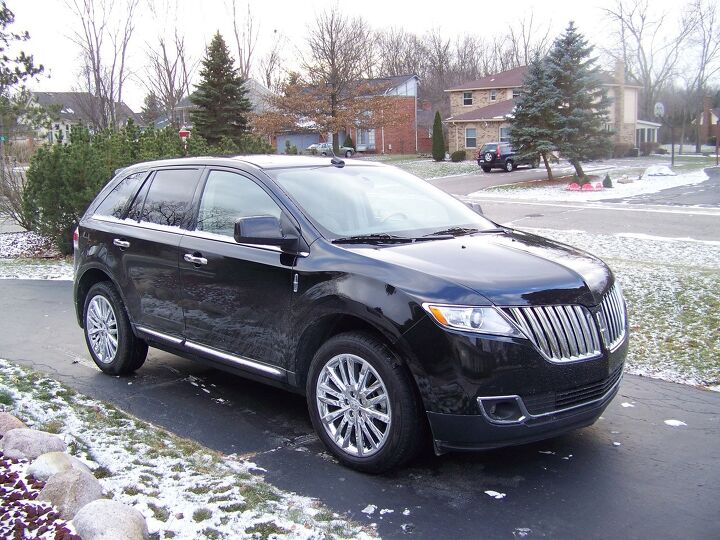









































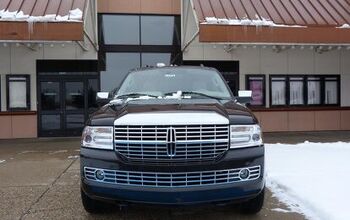
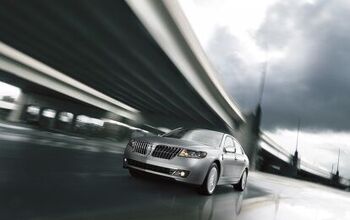
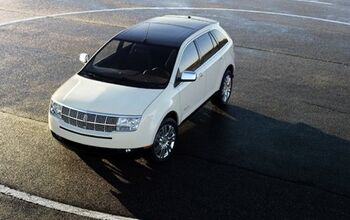
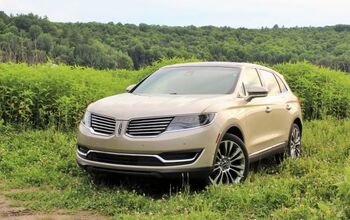
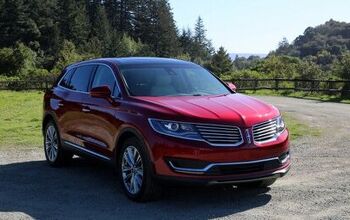










Comments
Join the conversation
I really liked this review. It confirmed my feelings for the MKS and MKX. The review could have been for either one of them. I am not a fan of the exterior, as mentioned in my comments on the MKS. I really wanted to like the MKS. It was a lot cheaper than the German competition but my '98 Continental may be the last Ford I ever own. My suggestion to Ford/Lincoln. Build a 7 series size car with a 5.0L GT motor with optional GT500 motor, move more toward aluminum in the suspension and body panels like the Germans, add an Audi interior, and top it off with all the MB safety features and creature comforts. Give the 5 series and Cadillac CTS business to the competitors and build a large luxury sedan the way we remember a Continental should be.
I put 100k on a 5.3 powered Suburban and almost 80k on my 07 Expedition and 16mpg in the suburbs is a pipe dream, 12-13 at best. 16-18mpg is possible on the highway if I stay under 70. I've taken to many 400+ mile trips to know that consistently achieving 20 mpg in a full size SUV is not feasible (I guess you'd have to drive about 50-55 mph to do so). I did get near 20mpg in the Expedition on a 300 mile trip once driving 80-85, but I had a 30-40mph tail wind. As for the MKX, I don't know if it offers enough over the Edge, though I do like the interior. Mileage seems par for the course for a 4000+ lb 300 hp SUV. As for the MyLinoln/Ford touch system, I don't think anyone is going to learn how to properly take advantage of what it has to offer in a week. But I really can't comment on it since I've never used it. Voice recognition seems to be it's strength.